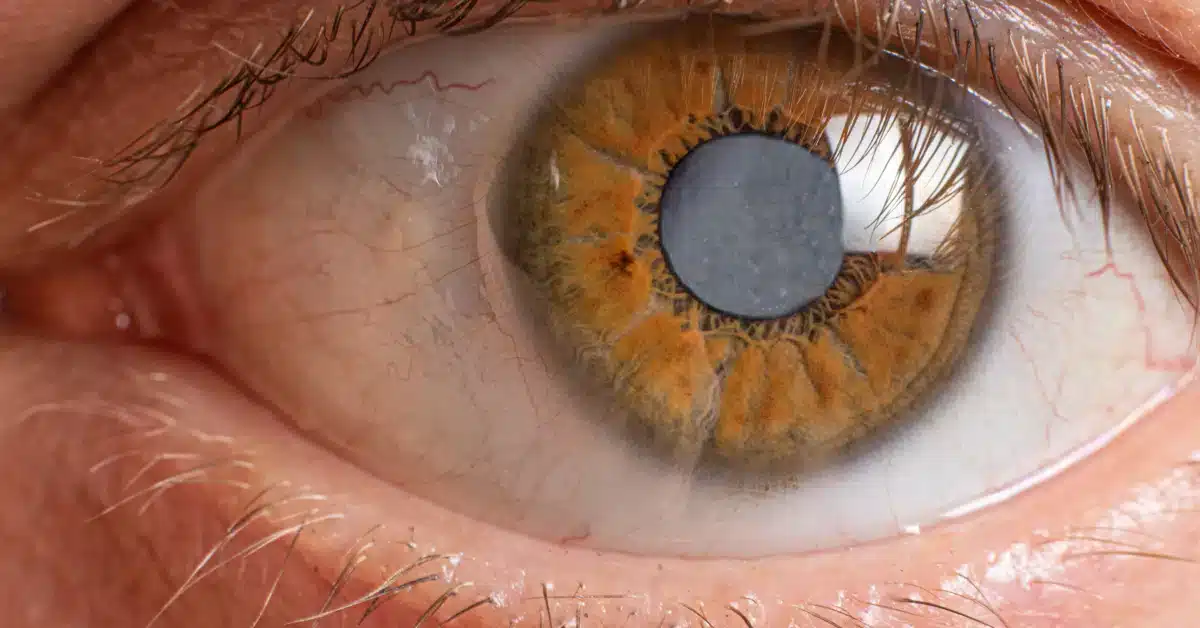Fuchs Dystrophy Treatment: A Complete Guide
Fuchs’ dystrophy is caused when fluids get trapped in the corneal layer of the eye.
It will usually affect both eyes and may lead to a worsening of vision.
Fuchs’ dystrophy can be treated by removing the fluids from the corneal layer of the eye.
There are also surgeries that can help with Fuchs’ dystrophy.
Read on to learn about Fuchs dystrophy treatments and causes.
What is Fuchs Dystrophy?
This fluid is collected in the transparent eye layer called the cornea. It is in front of the eye, which causes the cornea to thicken and swell.
This may lead to blurred or cloudy vision, glare, and eye discomfort.
It usually affects both eyes and may cause gradual worsening of your vision.
Even though it starts in people in their 30s or 40s, many people only develop symptoms once they are in their 50s or 60s.
Some medications and self-care tips relieve people from Fuchs’ dystrophy symptoms and its signs.
But if it is too advanced, and affects your ability to function, the best way to get your vision back to normal is by having a cornea transplant surgery.
Fuchs Dystrophy Treatment
Although doctors cannot cure Fuchs’ dystrophy, doctors can treat it.
In the early stages, observation may be needed to find the reason for the disorder.
Treatments that are used later include:
- When it has started to limit your vision, surgery is the option that needs to be pursued. A partial thickness internal corneal transplant is its traditional surgery.
In it, the damaged Endothelial cells are replaced with healthy ones. These cells are taken from a deceased donor. - Your doctor may recommend ointments and eye drops for people with mild symptoms of Fuchs’ dystrophy.
The medications can help reduce swelling by drying up the excess fluid.
- Surgeons can strip off some of the cells in the Descemet layer. It is a new procedure that does not require a donor.
The surgeon will take away the central diseased cells to allow the healthier and own cells from the side to replace them. - To help with light sensitivity, you can use photochromic lenses. These glasses darken when exposed to light.
- To reduce the morning blur, you can use a handheld air dryer to blow warm air at the face and help the fluid dry up.
Diagnosis
To diagnose Fuchs’s dystrophy, the doctor will take a medical history exam to ask questions about the symptoms, and a thorough eye exam will also be accepted.
These are the tests used to diagnose Fuchs’ dystrophy:
Microscopy
In these exams, microscopes are used to diagnose.
The slit lamp equipment used in the eye exam combines light from the tiny slit to a complete circle with a microscope.
The specular or confocal microscope uses light projection to allow the provider the view even to count your endothelial cells.
Pachymetry
It is a painless test that helps measure the cornea’s thickness. This helps diagnose as the cornea gets thicker due to the collection of fluids in the retina.
Optical Coherence Tomography

It is a noninvasive imaging technique that uses reflected light to create pictures on the back of the eye.
Complications
The body may reject donor tissues if you have a transplant.
The signs that the body is rejecting donor tissues include:
- Eye redness
- Hazy or cloudy vision
- Sensitivity to light
- Eye pain
You should immediately inform your doctor if you notice symptoms like these. Let them know even if you have any other unusual eye problems.
They might prescribe medicines to prevent rejection.
Prevention
There are no ways that are known. You can use that to prevent Fuchs’ dystrophy.
Doctors have yet to research and learn more about how genes affect this disease, the risk factors of smoking, etc.
For now, the best treatments for people in the early stages of Fuchs’ dystrophy are to remove fluids and ease corneal swelling in early stages by using drops and ointments.
For an advanced case of Fuchs’ dystrophy, you can go for a corneal transplant.
Takeaway

So to treat Fuchs’ dystrophy, you can use eye drops and ointments if it is in its earlier stage.
However, for advanced Fuchs’ dystrophy, surgery is needed to clear away the cornea’s collected fluid and see clearly.
The surgery may include using a donor’s healthy endothelial cells, or cells can be used from the Descemet layer, so a donor is not required.
Although the causes of Fuchs’ dystrophy are unknown, they can be detected in patients using Microscopy and Pachymetry.
It is difficult to prevent this disorder as even the cause is unknown.
Frequently Asked Questions
How severe is Fuchs dystrophy?
In Fuchs’ dystrophy, fluids keep collecting in the transparent layer of the eye or the cornea in front of the eye. It causes the cornea to thicken and swell. This may lead to blurred vision and discomfort in the eye.
How quickly does Fuchs’ dystrophy progress?
It usually affects both eyes simultaneously and can cause the vision to worsen over the years gradually. The disease starts in people in their 30s or 40s, with visible symptoms developing in people in their 50s or 60s.
How many people have Fuchs’ dystrophy?
Fuchs’ dystrophy affects approximately 4% of people over 40 years in the United States. Also note that its symptoms develop later on in life, at around the age of 50.
How does cataract surgery affect Fuchs’ dystrophy?
There is a risk of postoperative corneal edema and corneal decompensation in a patient with Fuchs’ dystrophy. Additionally, vision may be affected due to corneal structure abnormalities and corneal thickness.
WowRx uses only high-quality sources while writing our articles. Please read our content information policy to know more about how we keep our content reliable and trustworthy.






